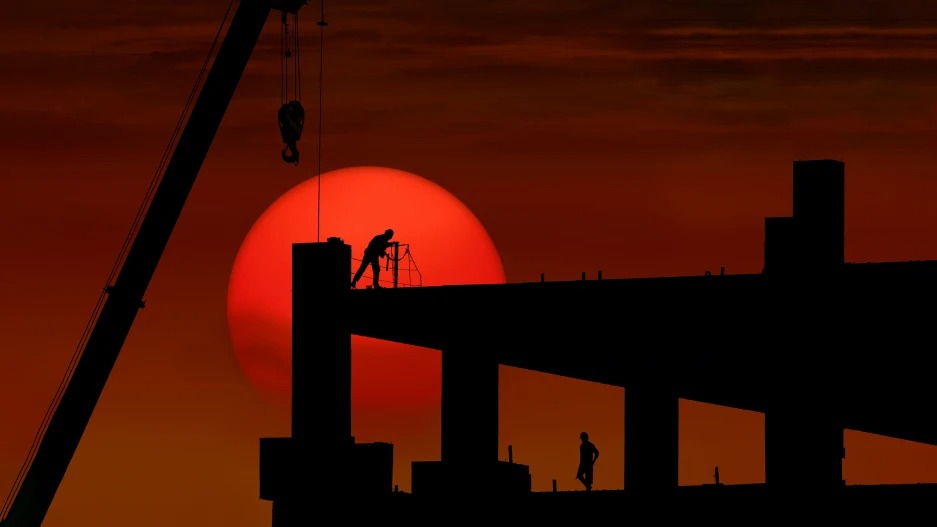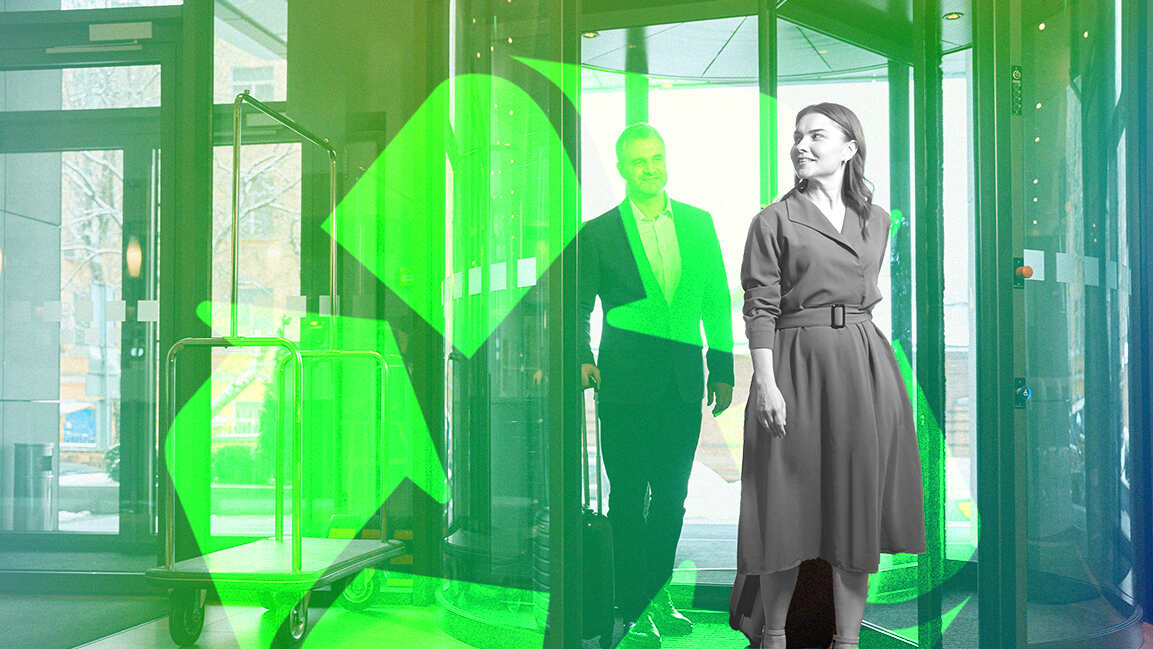- | 9:00 am
It’s time to treat climate change like an on-the-job hazard
Workers have long had to fight for protections on the job. Now, they need protections from things like wildfires, extreme heat, and air quality.

At the end of July, just as the hottest month on record was coming to a close, U.S. President Joe Biden asked the Department of Labor to issue its first-ever hazard alert for heat.
That’s not to say that heat is a new threat for workers. Between 2011 and 2021, more than 400 workers died due to heat exposure. Whenever cities see extreme temperatures—like when Phoenix experienced a 31-day streak of record-breaking heat in July—experts are quick to point out how workers, particularly those in construction, agriculture, or other industries where people labor outside, are at the frontlines of this hazard. Extreme heat feels even more extreme in these workplaces, like for airport workers who stand on heat-absorbing asphalt, or roofers who have no protection from the sun, or delivery workers whose trucks can hit more than 120 degrees Fahrenheit.
What Biden’s announcement underscored is the urgent need for standardized, regulated protections from all sorts of climate-related catastrophes that will only continue to put workers at risk.
It’s not just heat; when Canada’s wildfires blanketed the East Coast in a thick haze of smoke, it was construction workers and delivery drivers who couldn’t avoid the hazardous air quality. The pollution even pushed office workers, who at least work indoors, to stay home, forcing all sorts of companies to consider the safety of their workers in the midst of a changing climate.
While extreme heat is getting worse, the fact that it’s not a new issue means that employers can prepare for it, says Rebecca Reindel, safety and health director of the AFL-CIO, which is made up of more than 60 unions that cover more than 12.5 million workers. They can ensure access to potable, cold water and breaks; alter work schedules based on the weather; provide functional air-conditioning systems in certain places, like warehouses or trucks; and generally have an emergency plan to respond to extreme weather. “We know how to plan and prepare and control some of these hazards for workers,” she adds. “It’s not just a given that people have to be exposed in the way that they are now.”
And yet, these protections aren’t necessarily commonplace. Texas recently removed requirements for frequent water breaks, stripping back regulations meant to protect workers from extreme heat. UPS only recently agreed to equip its trucks with air-conditioning after workers made it a prominent issue in their union negotiations. There are still no federal rules to protect workers from heat, nor any temperature thresholds that trigger required actions by all employers. (Oregon’s heat standards, for example, go into effect when the heat index gets above 80 degrees Fahrenheit). There also aren’t federal standards for protections from wildfires, air quality, or other climate hazards. Instead, there’s a patchwork of occupational protections.
In July, a group of Democratic lawmakers introduced new legislation requiring the Occupational Safety and Health Administration (OSHA) to issue an enforceable standard to protect workers from heat and to develop an interim rule within one year. (It doesn’t seem to have support from the House). The bill was named after Asunción Valdivia, a worker who died in 2004 at 53-years-old after picking grapes in 105-degree heat for 10 hours straight. OSHA had been working on this issue before that bill, Reindel notes, but she said it’s an “overly burdensome and long process. We really need something urgent.”
The impacts of the climate crisis have accelerated faster than expected, with more storms, more floods, more heat, and higher temperatures. “We’re on trajectory for disaster,” says Lara Skinner, executive director of the Climate Jobs Institute at Cornell’s School of Industrial Labor Relations. “I feel very scared and concerned about how things are going to look in 10, 20, 30 years.”
Skinner has been working on the intersection of climate and labor for years, and at the beginning of 2023 launched the Climate Jobs Institute, which is focused on researching and developing policies to support clean energy targets and the creation of union jobs to reach them. Obviously climate change is an environmental issue, but Skinner notes that there are also tremendous social, economic, and labor impacts: not only that of extreme conditions on workers directly, but also the productivity losses and the cost of rebuilding after disaster.
The International Labour Organization projects that heat stress alone will reduce worldwide total working hours by 2.2%—equivalent to 80 million full-time jobs—and global GDP by $2.4 trillion, in 2030. That’s a staggering increase from 1995, when economic losses due to heat stress were estimated at $280 billion.
Workers, primarily through unions, have a long history of fighting for protections from on-the-job hazards. Think of bus drivers who now have protections against violence from riders, or the myriad workers who fought for protections from dangerous chemicals. “It’s the same thing with extreme weather now,” Skinner says. “Do employers have climate emergency and resiliency plans in place that will keep workers and others safe during these events? Can workers stay home if the air quality is too bad and still get paid?”
If workplaces aren’t already thinking about how to protect their employees from climate impacts, they’ll undoubtedly have to in the near future. It can be difficult for people to really understand how much climate change will impact their daily lives in the future, but we have to plan for those changes now, “and be ready to avoid more disastrous impacts, especially for workers,” Skinner says. “Workers are on the front lines of the climate crisis and extreme weather events . . . And it’s going to get worse and worse.”








































